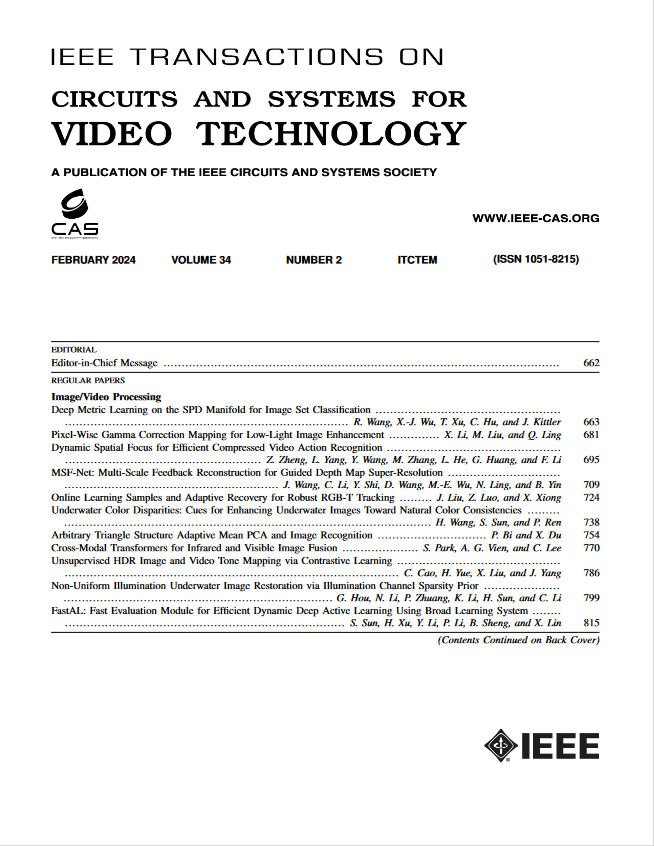DAWN: Domain-Adaptive Weakly Supervised Nuclei Segmentation via Cross-Task Interactions
IF 8.3
1区 工程技术
Q1 ENGINEERING, ELECTRICAL & ELECTRONIC
IEEE Transactions on Circuits and Systems for Video Technology
Pub Date : 2024-12-13
DOI:10.1109/TCSVT.2024.3515467
引用次数: 0
Abstract
Weakly supervised segmentation methods have garnered considerable attention due to their potential to alleviate the need for labor-intensive pixel-level annotations during model training. Traditional weakly supervised nuclei segmentation approaches typically involve a two-stage process: pseudo-label generation followed by network training. The performance of these methods is highly dependent on the quality of the generated pseudo-labels, which can limit their effectiveness. In this paper, we propose a novel domain-adaptive weakly supervised nuclei segmentation framework that addresses the challenge of pseudo-label generation through cross-task interaction strategies. Specifically, our approach leverages weakly annotated data to train an auxiliary detection task, which facilitates domain adaptation of the segmentation network. To improve the efficiency of domain adaptation, we introduce a consistent feature constraint module that integrates prior knowledge from the source domain. Additionally, we develop methods for pseudo-label optimization and interactive training to enhance domain transfer capabilities. We validate the effectiveness of our proposed method through extensive comparative and ablation experiments conducted on six datasets. The results demonstrate that our approach outperforms existing weakly supervised methods and achieves performance comparable to or exceeding that of fully supervised methods. Our code is available at跨任务交互的域自适应弱监督核分割
弱监督分割方法已经引起了相当大的关注,因为它们有可能减轻模型训练期间对劳动密集型像素级注释的需求。传统的弱监督核分割方法通常包括两个阶段:伪标签生成和网络训练。这些方法的性能高度依赖于生成的伪标签的质量,这可能会限制它们的有效性。在本文中,我们提出了一个新的领域自适应弱监督核分割框架,该框架通过跨任务交互策略解决了伪标签生成的挑战。具体来说,我们的方法利用弱注释数据来训练辅助检测任务,这有助于分割网络的域适应。为了提高领域自适应的效率,我们引入了一个集成了源领域先验知识的一致性特征约束模块。此外,我们还开发了伪标签优化和交互式训练方法,以增强领域迁移能力。我们通过在六个数据集上进行广泛的对比和消融实验来验证我们提出的方法的有效性。结果表明,我们的方法优于现有的弱监督方法,并达到与完全监督方法相当或超过的性能。我们的代码可在https://github.com/zhangye-zoe/DAWN上获得。
本文章由计算机程序翻译,如有差异,请以英文原文为准。
求助全文
约1分钟内获得全文
求助全文
来源期刊
CiteScore
13.80
自引率
27.40%
发文量
660
审稿时长
5 months
期刊介绍:
The IEEE Transactions on Circuits and Systems for Video Technology (TCSVT) is dedicated to covering all aspects of video technologies from a circuits and systems perspective. We encourage submissions of general, theoretical, and application-oriented papers related to image and video acquisition, representation, presentation, and display. Additionally, we welcome contributions in areas such as processing, filtering, and transforms; analysis and synthesis; learning and understanding; compression, transmission, communication, and networking; as well as storage, retrieval, indexing, and search. Furthermore, papers focusing on hardware and software design and implementation are highly valued. Join us in advancing the field of video technology through innovative research and insights.

 求助内容:
求助内容: 应助结果提醒方式:
应助结果提醒方式:


